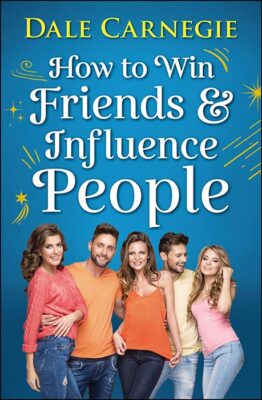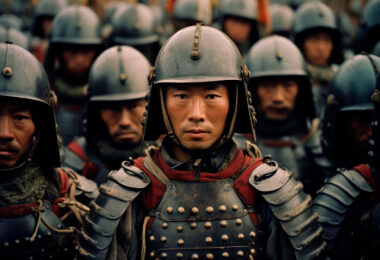Dale Carnegie’s How to Win Friends and Influence People is a cornerstone of personal development literature, offering a timeless roadmap for improving human relationships. Since its first publication in 1936, the book has transformed the lives of millions by showing how simple behavioral changes and emotional intelligence can lead to profound improvements in both personal and professional life. Carnegie’s core thesis is that success in life depends not merely on knowledge or technical skills, but on the ability to deal effectively with people. Throughout the book, he illustrates how anyone can become more persuasive, likable, and influential simply by adopting a few foundational principles rooted in empathy, respect, and genuine interest in others.
The book opens with an essential insight into human nature: people are primarily emotional, not rational. Therefore, if you want to influence others, logic alone is not enough. One of Carnegie’s first and most powerful recommendations is to refrain from criticizing, condemning, or complaining about others. He explains that people rarely blame themselves, even when clearly at fault. When criticized, they tend to become defensive and justify their actions rather than reflect and change. Rather than point out faults directly, Carnegie encourages readers to look for opportunities to understand others and find common ground. He illustrates this with real-life examples, including stories of notorious criminals who viewed themselves as victims or heroes, not wrongdoers. Criticism, he argues, is not only ineffective but harmful to relationships, as it wounds pride and provokes resistance rather than cooperation.

Carnegie’s second foundational principle is the power of honest and sincere appreciation. Unlike flattery, which is insincere and often transparent, genuine appreciation fulfills a deep psychological need to feel important. Carnegie emphasizes that appreciation must come from a place of authenticity. When people feel truly valued, they become more cooperative, loyal, and motivated. This practice, Carnegie insists, is not about manipulation but about recognition—highlighting others’ strengths and contributions in ways that are heartfelt and meaningful. He shares examples from business and politics where simple words of appreciation led to remarkable results in productivity and morale.
Another key to influencing others is to appeal to their desires rather than your own. Carnegie argues that the most effective way to persuade someone to do something is to make them want to do it. This means focusing on their goals, needs, and interests instead of your own agenda. He uses the example of fishing: we don’t bait a hook with what we like; we use what the fish wants. Likewise, to get others on board with your ideas, you must speak in terms of what they care about. By aligning your requests or ideas with what motivates the other person, you naturally increase your influence.
To make people like you, Carnegie suggests six powerful strategies rooted in empathy and curiosity. The first is to become genuinely interested in other people. When you take a sincere interest in someone’s life, their work, or their opinions, you form a natural connection. People enjoy talking about themselves and appreciate when others show authentic curiosity about their experiences. Carnegie reminds readers that listening attentively and remembering personal details can have a lasting impact on relationships. The second strategy is simply to smile. Though it may seem trivial, a smile conveys warmth, friendliness, and confidence. It makes people feel at ease and positively influences the emotional tone of any interaction. Carnegie calls it “a messenger of goodwill,” and emphasizes its power to open doors and disarm tension.
Names, according to Carnegie, hold deep emotional weight. Remembering and using someone’s name is a simple yet powerful way to show respect and make someone feel important. He stresses that a person’s name, to that person, is the sweetest sound in any language. Taking the time to learn and remember names leaves a strong, positive impression. Another strategy for likability is to be a good listener. Carnegie explains that people love to talk about themselves and their experiences, and when you give them that space without interrupting or dominating the conversation, they are more likely to like and trust you. Good listeners don’t just hear words—they respond with empathy and interest.
Continuing this theme, Carnegie suggests talking in terms of the other person’s interests. If you want to build rapport, find out what the other person enjoys and engage them on that topic. This approach demonstrates consideration and helps establish a bond. Lastly, he encourages making the other person feel important—and doing so sincerely. Everyone wants to feel significant. Carnegie advises readers to find opportunities to affirm others’ worth, recognizing their strengths, achievements, or contributions in honest and heartfelt ways. He emphasizes that these compliments must never be forced or dishonest, as people can detect insincerity easily. Real appreciation, given freely and often, strengthens relationships and fosters trust.
When it comes to persuading others or winning them over to your way of thinking, Carnegie emphasizes that arguments are rarely productive. The only way to get the best of an argument, he insists, is to avoid it entirely. Even if you win, you may damage the relationship or cause resentment. Instead of arguing, he suggests finding points of agreement, listening to the other person’s perspective, and using tact to influence their thinking. Showing respect for other people’s opinions is crucial. Never begin a conversation by saying “you’re wrong,” as this puts others on the defensive and makes them less receptive. Instead, Carnegie recommends showing openness and a willingness to learn by saying something like “I may be wrong; let’s look at the facts together.”
Admitting when you’re wrong is another powerful tool for influencing others. People are often surprised and disarmed when someone openly takes responsibility for a mistake. It shows humility and builds credibility. Carnegie illustrates how confessing errors not only diffuses tension but also encourages others to admit their own faults. Beginning interactions in a friendly way is also important. Hostility or force rarely change minds, but warmth and kindness often do. Carnegie describes how even difficult negotiations can be transformed by a kind tone and a smile at the outset.
To persuade effectively, it’s useful to get others saying “yes” as early and often as possible. This technique, derived from the Socratic method, builds a pattern of agreement that makes people more receptive to your proposals. Carnegie also emphasizes the value of letting the other person do most of the talking. People want to feel heard, and dominating a conversation often turns them away. By asking questions and listening carefully, you allow others to express themselves and become more open to your viewpoint.
A particularly clever strategy Carnegie promotes is letting others feel that an idea is theirs. When people believe an idea originated from them, they are more likely to embrace it and follow through. You can guide someone to a conclusion through thoughtful questioning, letting them come to the answer themselves. This creates a sense of ownership and pride. Seeing things from the other person’s point of view is equally important. Understanding their concerns, feelings, and goals helps you connect on a deeper level. Carnegie encourages readers to be sympathetic to others’ ideas and desires, acknowledging their emotions and validating their experiences. This empathy builds bridges and creates mutual understanding.
Appealing to the nobler motives in people is another method Carnegie recommends. When you frame your request or argument in terms of values like fairness, integrity, or loyalty, people respond positively. Most individuals want to think of themselves as good and decent, so connecting your message to their higher ideals is persuasive. To make your ideas more compelling, dramatize them. Use vivid language, stories, and analogies to make your point memorable and engaging. People respond to emotional and sensory details more than dry logic. In some cases, throwing down a challenge can be highly motivating. People often rise to the occasion when presented with a goal, competition, or opportunity to prove themselves.
When trying to change someone’s behavior, it’s crucial to do so without arousing resentment. Carnegie begins this section by suggesting that all criticism should start with praise and honest appreciation. This softens the message and makes the person more receptive. When pointing out mistakes, do so indirectly. Tact and diplomacy help preserve the other person’s dignity. It can be especially helpful to talk about your own mistakes before addressing someone else’s. This creates a sense of equality and mutual respect, making it easier for the other person to accept feedback.
Instead of issuing direct commands, Carnegie suggests asking questions. This gives the other person a sense of control and involvement, increasing their willingness to act. Another key principle is to let people save face. Never embarrass or belittle someone, especially in front of others. Preserving their self-respect is essential for maintaining trust and cooperation. Carnegie advises praising even the slightest improvement. Encouragement, when delivered sincerely, boosts confidence and reinforces progress. People thrive on recognition and support.
Giving someone a fine reputation to live up to is another effective approach. If you tell someone they are reliable or hardworking, they often work to match that image. This technique leverages the human desire to be consistent with how others see us. At the same time, it’s important to make faults seem easy to correct. If you present a mistake as minor and solvable, the person is more likely to take action. Avoid dramatizing problems or making someone feel overwhelmed by criticism.
Finally, Carnegie recommends making the other person happy about doing what you suggest. This involves aligning your request with their interests and offering sincere appreciation in advance. When people feel recognized, empowered, and valued, they are far more willing to cooperate. The book closes with the reminder that all these principles are grounded in kindness, sincerity, and a genuine interest in others. They are not manipulative tactics but tools for building stronger, more meaningful relationships.
Dale Carnegie’s How to Win Friends and Influence People endures because it speaks to fundamental human truths. Everyone wants to feel important, to be understood, and to be treated with respect. By applying these principles consistently, anyone can improve their relationships, influence others more effectively, and create a life built on trust and goodwill. The book is not merely a guide to social success—it is a manual for becoming a better, more compassionate person. Through real stories and practical advice, Carnegie teaches that the path to influence lies in understanding, empathy, and the consistent application of kindness.

Sample Chapter from the Original Book:
Chapter 1: “If You Want to Gather Honey, Don’t Kick Over the Beehive”
On May 7, 1931, the most sensational manhunt New York City had ever known had come to its climax. After weeks of search, “Two Gun” Crowley—the killer, the gunman who didn’t smoke or drink—was at bay, trapped in his sweetheart’s apartment on West End Avenue.
One hundred and fifty policemen and detectives laid siege to his top-floor hideaway. They chopped holes in the roof; they tried to smoke out Crowley, the “cop killer,” with teargas. Then they mounted their machine guns on surrounding buildings, and for more than an hour one of New York’s fine residential areas reverberated with the crack of pistol fire and the rut-tat-tat of machine guns. Crowley, crouching behind an overstuffed chair, fired incessantly at the police. Ten thousand excited people watched the battle. Nothing like it had ever been seen before on the sidewalks of New York.
When Crowley was captured, Police Commissioner E.P. Mulrooney declared that the two-gun desperado was one of the most dangerous criminals ever encountered in the history of New York. “He will kill,” said the Commissioner, “at the drop of a feather.”
But how did “Two Gun” Crowley regard himself? We know, because while the police were firing into his apartment, he wrote a letter addressed “To whom it may concern,” And, as he wrote, the blood flowing from his wounds left a crimson trail on the paper. In this letter Crowley said: “Under my coat is a weary heart, but a kind one—one that would do nobody any harm.”
A short time before this, Crowley had been having a necking party with his girl friend on a country road out on Long Island. Suddenly a policeman walked up to the car and said: “Let me see your license.”
Without saying a word, Crowley drew his gun and cut the policeman down with a shower of lead. As the dying officer fell, Crowley leaped out of the car, grabbed the officer’s revolver, and fired another bullet into the prostrate body. And that was the killer who said: “Under my coat is a weary heart, but a kind one—one that would do nobody any harm.”
Crowley was sentenced to the electric chair. When he arrived at the death house in Sing Sing, did he say, “This is what I get for killing people”? No, he said: “This is what I get for defending myself.”
The point of the story is this: “Two Gun” Crowley didn’t blame himself for anything.
Is that an unusual attitude among criminals? If you think so, listen to this:
“I have spent the best years of my life giving people the lighter pleasures, helping them have a good time, and all I get is abuse, the existence of a hunted man.”
That’s Al Capone speaking. Yes, America’s most notorious Public Enemy—the most sinister gang leader who ever shot up Chicago. Capone didn’t condemn himself. He actually regarded himself as a public benefactor—an unappreciated and misunderstood public benefactor.
And so did Dutch Schultz before he crumpled up under gangster bullets in Newark. Dutch Schultz, one of New York’s most notorious rats, said in a newspaper interview that he was a public benefactor. And he believed it.
I have had some interesting correspondence with Lewis Lawes, who was warden of New York’s infamous Sing Sing prison for many years, on this subject, and he declared that “few of the criminals in Sing Sing regard themselves as bad men. They are just as human as you and I. So they rationalize, they explain. They can tell you why they had to crack a safe or be quick on the trigger finger. Most of them attempt by a form of reasoning, fallacious or logical, to justify their antisocial acts even to themselves, consequently stoutly maintaining that they should never have been imprisoned at all.”
If Al Capone, “Two Gun” Crowley, Dutch Schultz, and the desperate men and women behind prison walls don’t blame themselves for anything—what about the people with whom you and I come in contact?
John Wanamaker, founder of the stores that bear his name, once confessed: “I learned thirty years ago that it is foolish to scold. I have enough trouble overcoming my own limitations without fretting over the fact that God has not seen fit to distribute evenly the gift of intelligence.”
Wanamaker learned this lesson early, but I personally had to blunder through this old world for a third of a century before it even began to dawn upon me that ninety-nine times out of a hundred, people don’t criticize themselves for anything, no matter how wrong it may be.
Criticism is futile because it puts a person on the defensive and usually makes him strive to justify himself. Criticism is dangerous, because it wounds a person’s precious pride, hurts his sense of importance, and arouses resentment.
B.F. Skinner, the world-famous psychologist, proved through his experiments that an animal rewarded for good behavior will learn much more rapidly and retain what it learns far more effectively than an animal punished for bad behavior. Later studies have shown that the same applies to humans. By criticizing, we do not make lasting changes and often incur resentment.
Hans Selye, another great psychologist, said, “As much as we thirst for approval, we dread condemnation.”
The resentment that criticism engenders can demoralize employees, family members and friends, and still not correct the situation that has been condemned.
George B. Johnston of Enid, Oklahoma, is the safety coordinator for an engineering company. One of his responsibilities is to see that employees wear their hard hats whenever they are on the job in the field. He reported that whenever he came across workers who were not wearing hard hats, he would tell them with a lot of authority of the regulation and that they must comply. As a result he would get sullen acceptance, and often after he left, the workers would remove the hats.
He decided to try a different approach. The next time he found some of the workers not wearing their hard hat, he asked if the hats were uncomfortable or did not fit properly. Then he reminded the men in a pleasant tone of voice that the hat was designed to protect them from injury and suggested that it always be worn on the job. The result was increased compliance with the regulation with no resentment or emotional upset.
You will find examples of the futility of criticism bristling on a thousand pages of history. Take, for example, the famous quarrel between Theodore Roosevelt and President Taft—a quarrel that split the Republican party, put Woodrow Wilson in the White House, and wrote bold, luminous lines across the First World War and altered the flow of history. Let’s review the facts quickly. When Theodore Roosevelt stepped out of the White House in 1908, he supported Taft, who was elected President. Then Theodore Roosevelt went off to Africa to shoot lions. When he returned, he exploded. He denounced Taft for his conservatism, tried to secure the nomination for a third term himself, formed the Bull Moose Party, and all but demolished the G.O.P. In the election that followed, William Howard Taft and the Republican Party carried only two states—Vermont and Utah. The most disastrous defeat the party had ever known.
Theodore Roosevelt blamed Taft, but did President Taft blame himself? Of course not. With tears in his eyes, Taft said: “I don’t see how I could have done any differently from what I have.”
Who was to blame? Roosevelt or Taft? Frankly, I don’t know, and I don’t care. The point I am trying to make is that all of Theodore Roosevelt’s criticism didn’t persuade Taft that he was wrong. It merely made Taft strive to justify himself and to reiterate with tears in his eyes: “I don’t see how I could have done any differently from what I have.”
Or, take the Teapot Dome oil scandal. It kept the newspapers ringing with indignation in the early 1920s. It rocked the nation! Within the memory of living men, nothing like it had ever happened before in American public life. Here are the bare facts of the scandal: Albert B. Fall, secretary of the interior in Harding’s cabinet, was entrusted with the leasing of government oil reserves at Elk Hill and Teapot Dome—oil reserves that had been set aside for the future use of the Navy. Did secretary Fall permit competitive bidding? No sir. He handed the fat, juicy contract outright to his friend Edward L. Doheny. And what did Doheny do? He gave Secretary Fall what he was pleased to call a “loan” of one hundred thousand dollars. Then, in a high-handed manner, Secretary Fall ordered United States Marines into the district to drive off competitors whose adjacent wells were sapping oil out of the Elk Hill reserves. These competitors, driven off their ground at the ends of guns and bayonets, rushed into court—and blew the lid off the Teapot Dome scandal. A stench arose so vile that it ruined the Harding Administration, nauseated an entire nation, threatened to wreck the Republican Party, and put Albert B. Fall behind prison bars.
Fall was condemned viciously—condemned as few men in public life have ever been. Did he repent? Never! Years later Herbert Hoover intimated in a public speech that President Harding’s death had been due to mental anxiety and worry because a friend had betrayed him. When Mrs. Fall heard that, she sprang from her chair, wept and she shook her fists at fate and screamed: “What! Harding betrayed by Fall? No! My husband never betrayed anyone. This whole house full of gold would not tempt my husband to do wrong. He is the one who has been betrayed and led to the slaughter and crucified.”
There you are, human nature in action, wrongdoers, blaming everybody but themselves. We are all like that. So when you and I are tempted to criticize someone tomorrow, let’s remember Al Capone, “Two Gun” Crowley and Albert Fall. Let’s realize that criticisms are like homing pigeons. They always return home. Let’s realize that the person we are going to correct and condemn will probably justify himself or herself, and condemn us in return; or, like the gentle Taft, will say: “I don’t see how I could have done any differently from what I have.”
On the morning of April 15, 1865, Abraham Lincoln lay dying in a hall bedroom of a cheap lodging house directly across the street from Ford’s Theater, where John Wilkes Booth had shot him. Lincoln’s long body lay stretched diagonally across a sagging bed that was too short for him. A cheap reproduction of Rosa Bonheur’s famous painting The Horse Fair hung above the bed, and a dismal gas jet flickered yellow light.
As Lincoln lay dying, Secretary of War Stanton said, “There lays the most perfect ruler of men that the world has ever seen.”
What was the secret of Lincoln’s success in dealing with people? I studied the life of Abraham Lincoln for ten years and devoted all of three years to writing and rewriting a book entitled Lincoln the Unknown. I believe I have made as detailed and exhaustive a study of Lincoln’s personality and home life as it is possible for any being to make. I made a special study of Lincoln’s method of dealing with people. Did he indulge in criticism? Oh, yes. As a young man in the Pigeon Creek Valley of Indiana, he not only criticized but he wrote letters and poems ridiculing people and dropped these letters on the country roads where they were sure to be found. One of these letters aroused resentments that burned for a lifetime.
Even after Lincoln had become a practicing lawyer in Springfield, Illinois, he attacked his opponents openly in letters published in the newspapers. But he did this just once too often.
In the autumn of 1842 he ridiculed a vain, pugnacious politician by the name of James Shields. Lincoln lampooned him through an anonymous letter published in Springfield Journal. The town roared with laughter. Shields, sensitive and proud, boiled with indignation. He found out who wrote the letter, leaped on his horse, started after Lincoln, and challenged him to fight a duel. Lincoln didn’t want to fight. He was opposed to dueling, but he couldn’t get out of it and save his honor. He was given the choice of weapons. Since he had very long arms, he chose cavalry broadswords and took lessons in sword fighting from a West Point graduate; and, on the appointed day, he and Shields met on a sandbar in the Mississippi River, prepared to fight to the death; but at the last minute, their seconds interrupted and stopped the duel.









